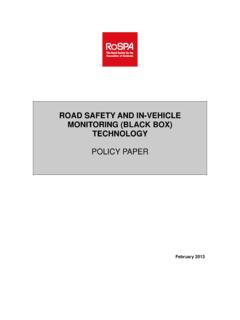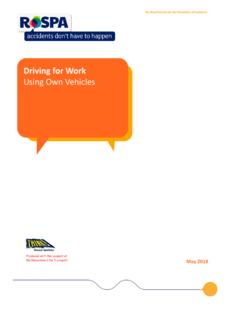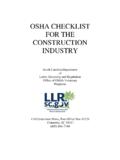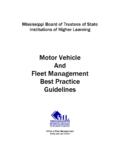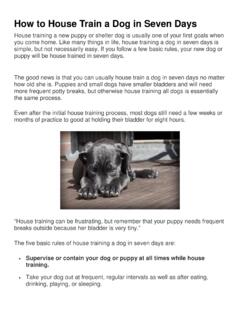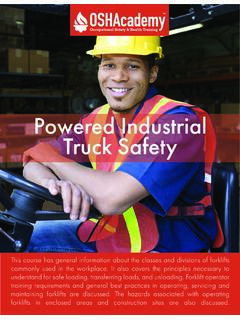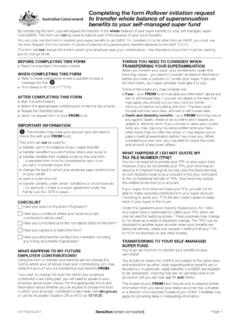Transcription of Step 1: Identify the hazards - RoSPA
1 The Health and Safety Executive s Five steps to risk assessment Step 1: Identify the hazards Walk around your venue and look at what could reasonably be expected to cause harm. Ask your other people what they think. They may have noticed things that are not immediately obvious to you. Visit the HSE website. HSE publishes practical guidance on where hazards occur and how to control them. There is much information on the hazards that might affect your event. If you are a member of a trade association, contact them. Many produce very helpful guidance. Check manufacturers instructions or data sheets for chemicals and equipment as they can be very helpful in spelling out the hazards and putting them in their true perspective.
2 Remember to think about long-term hazards to health (eg high levels of noise or exposure to harmful substances) as well as safety hazards . Step 2: Decide who might be harmed and how For each hazard you need to be clear about who might be harmed; it will help you Identify the best way of managing the risk. That doesn t mean listing everyone by name, but rather identifying groups of people (eg people working in the storeroom or passers-by ). Remember: some workers have particular requirements, eg new and young workers , migrant workers , new or expectant mothers and people with disabilities may be at particular risk. Extra thought will be needed for some hazards ; cleaners, visitors, contractors, maintenance workers etc, who may not be in the venue all the time; members of the public, if they could be hurt by your activities; ask others if they can think of anyone you may have missed.
3 In each case, Identify how they might be harmed, what type of injury or ill health might occur. For example, shelf stackers may suffer back injury from repeated lifting of boxes . Step 3: Evaluate the risks and decide on precautions Having spotted the hazards , you then have to decide what to do about them. The law requires you to do everything reasonably practicable to protect people from harm. You can work this out for yourself, but the easiest way is to compare what you are doing with good practice. First, look at what you re already doing, think about what controls you have in place and how it is organised. Then compare this with the good practice and see if there s more you should be doing to bring yourself up to standard.
4 In asking yourself this, consider: Can I get rid of the hazard altogether? If not, how can I control the risks so that harm is unlikely? When controlling risks , apply the principles below, if possible in the following order: try a less risky option (eg switch to using a less hazardous chemical); prevent access to the hazard (eg by guarding); organise work to reduce exposure to the hazard (eg put barriers between pedestrians and traffic); issue personal protective equipment (eg clothing, footwear, goggles etc); and provide welfare facilities (eg first aid and washing facilities for removal of contamination). Improving health and safety need not cost a lot. For instance, placing a mirror on a dangerous blind corner to help prevent vehicle accidents is a low-cost precaution considering the risks .
5 Failure to take simple precautions can cost you a lot more if an accident does happen. Step 4: Record your findings and implement them Putting the results of your risk assessment into practice will make a difference when looking after people and your fundraising event. Writing down the results of your risk assessment , and sharing them, encourages you to do this. When writing down your results, keep it simple, for example Tripping over rubbish: bins provided, staff instructed, weekly housekeeping checks . We do not expect a risk assessment to be perfect, but it must be suitable and sufficient. As illustrated by our example risk assessments, you need to be able to show that: a proper check was made; you asked who might be affected; you dealt with all the obvious significant hazards , taking into account the number of people who could be involved; the precautions are reasonable, and the remaining risk is low; and you involved your staff or their representatives in the process.
6 Step 5: Review your risk assessment and update if necessary Things are likely to change between first conducting your risk assessment and your fundraising event. It makes sense therefore, to review what you are doing on an ongoing basis. Look at your risk assessment and think about whether there have been any changes? Are there improvements you still need to make? Have other people spotted a problem? Have you learnt anything from accidents or near misses? Make sure your risk assessment stays up to date.

